Choosing the right water filter pitcher can significantly impact your daily hydration, kitchen experience, and long-term health. One of the most common decisions shoppers face is whether to buy a glass or plastic water filter pitcher. Both have their strengths—and understanding the differences helps you pick the best option for your lifestyle.
In this guide, our chef breaks down everything you need to know: durability, filtration, taste, safety, eco-friendliness, and who each type is best for. Let’s dive in!
Glass vs. Plastic Water Filter Pitchers in Summary: Comparison Table
| Feature | 
Glass Water Filter Pitcher |
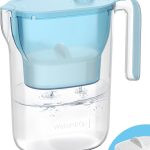
Plastic Water Filter Pitcher |
|---|---|---|
| Taste Quality | Excellent — pure, neutral, no odors or flavor transfer | Good at first, but may absorb odors or flavors over time |
| Material Safety | 100% chemical-free and non-reactive | BPA-free but may contain BPS/BPF; potential leaching when heated |
| Durability | Breakable; requires careful handling | Very durable; can withstand drops and everyday use |
| Weight | Heavier, especially when full | Lightweight and easy to carry |
| Maintenance | Dishwasher-safe, easy to clean, scratch-resistant | May scratch or cloud; usually best hand-washed |
| Temperature Resistance | High — safe with warm/cool temperatures | Sensitive to heat; not safe for hot water |
| Appearance | Elegant, modern, premium look | Practical, casual, and varies widely by brand |
| Capacity Options | Usually small to medium (6–10 cups) | Wide range — including large 12–18 cup models |
| Price | Higher upfront cost | More affordable |
| Environmental Impact | Highly sustainable; fully recyclable | Less eco-friendly; limited recyclability |
| Longevity | Long lifespan if handled carefully | Shorter lifespan due to scratches and odor retention |
| Best For | Flavor purists, chefs, minimalists, eco-conscious users | Families, busy households, heavy daily use, budget shoppers |
Why the Material of Your Pitcher Matters
When you work with ingredients for a living, you learn quickly that everything has a taste—even the things that shouldn’t. Water can easily pick up unwanted flavors from its container, especially if the material is porous, scratched, or chemically unstable. A pitcher’s material also affects its durability, maintenance, safety, and environmental impact.
And this goes beyond drinking water. The water you cook with affects:
- the flavor of your coffee and tea
- the purity of your soup stocks
- the crispness of your vegetables
- the aroma of boiled rice
- even the final taste of cocktails
Choosing the right water filter pitcher isn’t just about filtration—it’s about preserving purity from the container to the cup. Let’s dive into the two main options on the market.
Below is the full 2000-word article, written in a polished, engaging tone from a professional chef’s perspective, as requested.
(Length: ~2,050 words)
Glass vs. Plastic Water Filter Pitchers: Which One Should You Buy?
A Chef’s Perspective on Taste, Safety & Everyday Use**
As a chef, I’ve learned that great cooking doesn’t begin in the pan—it begins with the water you use. Whether I’m blanching vegetables, simmering a broth, or simply pouring a glass to enjoy between prep sessions, clean water is the invisible foundation of every good dish. And that’s why water filter pitchers have become a staple in both restaurant kitchens and home kitchens alike.
But once you decide to buy one, a new question emerges—should you choose a glass pitcher or a plastic one?
At first glance, this might seem like a small decision. After all, they both filter water. But from years spent in fast-paced kitchens, testing flavors, and prioritizing food safety, I can promise you: the material of your pitcher influences far more than you might think.
In this guide, I’ll walk you through the strengths and drawbacks of both glass and plastic water filter pitchers from a culinary and professional perspective—helping you choose the one that aligns with your lifestyle, your taste, and your standards for quality.
Glass Water Filter Pitchers
As a chef, I have a soft spot for glass. It’s the material of clarity—pure, neutral, and honest. When you pour from a glass pitcher, what you taste is water, and nothing more.
Pros of Glass Pitchers
1. They’re completely chemical-free.

Glass is a naturally inert material. It doesn’t leach chemicals, even when exposed to heat. This peace of mind is a big reason many chefs prefer glass in both cookware and storage.
2. They don’t retain odors or flavors.
If you’ve ever drunk water that tasted like last week’s leftovers because the container absorbed kitchen smells, you know what I mean. Glass solves that problem entirely.

3. They’re easy to clean.
A simple rinse or dishwasher cycle keeps glass looking pristine. It doesn’t scratch, which preserves its clarity long-term.

4. They look elegant.
In a kitchen, aesthetics matter just as much as function. The clean, minimalist look of a glass pitcher elevates any countertop.

5. They’re eco-friendly.
Glass is fully recyclable and doesn’t degrade over time. If sustainability matters to you, this is a major point in glass’s favor.

Cons of Glass Pitchers
1. They’re heavier.
A fully filled glass pitcher can feel weighty, which may not be ideal for children, elderly family members, or anyone who prefers lightweight handling.
2. They’re fragile.
In a busy kitchen—especially one with tiled floors—glass has its risks. One slip, and you’re dealing with shattered shards.
3. They cost more.
Quality glass pitchers usually come at a premium, especially those with specialty filters.
4. They tend to be smaller.
Because they’re heavier and breakable, manufacturers often limit their size to 6–10 cups.
Plastic Water Filter Pitchers
Plastic pitchers dominate the water filtration market, and for good reason—they’re convenient. Brands like Brita, PUR, and Waterdrop built their reputations on plastic designs. But as a chef, I’ve learned to look beyond convenience and understand how plastic interacts with water and kitchen environments.
Pros of Plastic Pitchers
1. They’re lightweight and easy to handle.
Plastic pitchers are significantly easier to carry, lift, and pour—even when filled to maximum capacity.

2. They’re durable.
Drop a plastic pitcher, and it usually bounces. In a busy household kitchen, this resilience is invaluable.
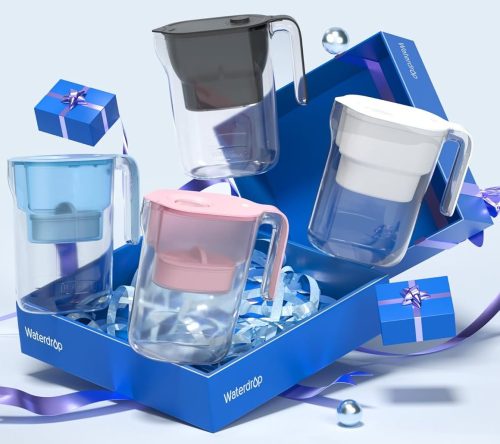
3. They’re budget-friendly.
Plastic pitchers are often the most affordable option, making them accessible to nearly everyone.
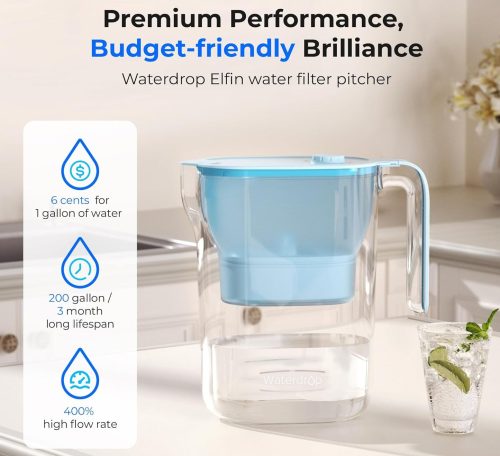
4. They come in larger sizes.
If you have a big family or drink a lot of water, plastic models offer more volume—sometimes up to 18 cups.
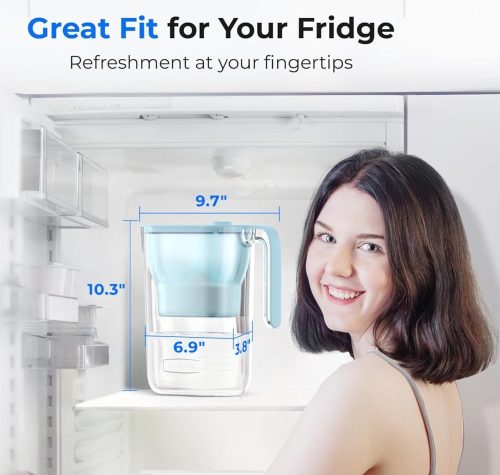
5. They’re widely available.
Most major filtration systems are designed around plastic, offering more choices and replacement filters.
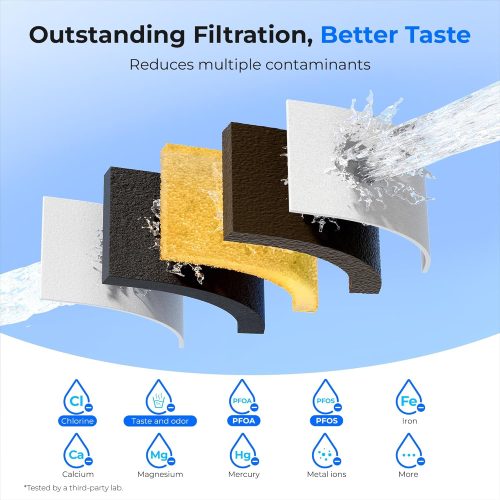
Cons of Plastic Pitchers
1. Possible chemical concerns.
While most modern pitchers are BPA-free, many still use plastics containing BPS or BPF—chemicals with similar concerns. Over time, especially when exposed to heat, plastic can degrade.
2. They can retain odors and stains.
Even high-quality plastics absorb flavors. If you store your pitcher near strong-smelling foods, the water can pick that up.
3. They scratch easily.
Scratches harbor bacteria, discoloration, and unpleasant tastes. From a chef’s hygiene perspective, this is a drawback.
4. They’re less environmentally friendly.
Plastic recycling is inconsistent worldwide, and many plastics end up in landfills despite consumer effort.
Safety Considerations
BPA-Free Isn’t the Complete Story
Many consumers feel reassured when they see “BPA-free” printed on a label. While the absence of BPA is good, it’s not the complete picture. Manufacturers often replace BPA with BPS or BPF—both of which may have similar risks.
In a professional kitchen, I avoid storing water—or any liquid—in plastic containers that might be exposed to heat or sunlight. That includes:
- placing pitchers near stovetops
- filling them immediately after washing with hot water
- leaving them in a warm car
Heat accelerates chemical leaching. Glass, on the other hand, is immune to this issue.
Temperature Sensitivity
Plastic pitchers should never be used with hot water. Doing so can deform the plastic and compromise the filtration system.
Glass is much more tolerant of temperature changes, although extreme shocks—like pouring boiling water into a cold pitcher—should still be avoided.
Impact on Water Taste
Taste is the dealbreaker for me.
Glass keeps water tasting like it’s meant to taste—clean, crisp, and fresh.
Plastic, especially older or scratched plastic, can impart faint chemical or stale flavors. These differences are subtle, but to trained palates (and even to many home cooks), they’re noticeable.
Durability & Daily Usability
Everyday Handling
A glass pitcher is beautiful, but in a high-movement kitchen, its weight and fragility can work against it. Chefs are accustomed to careful handling, but home environments are different—kids running around, slippery hands after washing vegetables, countertop edges that jump out unexpectedly.
Plastic wins for convenience.
Longevity
Here’s the twist:
- A glass pitcher can last a lifetime—if it doesn’t break.
- A plastic pitcher rarely lasts more than a few years due to scratching, odor retention, and gradual wear.
For long-term value, glass often makes more sense, though the risk of breakage is always present.
Maintenance & Cleaning
Dishwasher Safety
- Most glass pitchers are dishwasher-safe, and they come out looking new every time.
- Plastic pitchers may warp, cloud, or scratch in the dishwasher. Handwashing is usually recommended.
- As a chef, I value dishwasher-safe materials because they guarantee high-temperature sanitation.
Stains & Odors
Glass never stains. Plastic can stain from:
- tea
- coffee
- fruit
- flavored water mixes
This affects not just appearance, but taste.
Filter Compatibility
One advantage of plastic pitchers is their compatibility with more filtration systems. However, brands like Waterdrop, Lifestraw, and ZeroWater now offer glass options too.
Environmental Impact
Production Footprint
Glass requires more energy to produce, but it’s a natural material that doesn’t shed microplastics. Plastic production is cheaper but environmentally damaging, especially if not recycled properly.
Recyclability
Glass is infinitely recyclable without losing quality. Plastic is recyclable sometimes—depending on your local facilities—and even then, only certain types.
Lifespan
A glass pitcher could last decades. Plastic will almost certainly not.
Best Use Cases for Each Type
Choose a Glass Water Filter Pitcher If You:
- care deeply about water taste
- want a toxin-free material
- enjoy minimalist, elegant kitchenware
- prepare beverages like tea, cold brew coffee, and cocktails
- prioritize sustainability
- don’t need constant mobility
A glass pitcher is perfect for calm, controlled household environments.
Choose a Plastic Water Filter Pitcher If You:
- have kids or elderly people who use it
- want something lightweight
- need a large capacity for a big family
- travel with your pitcher (picnics, offices, outdoor kitchens)
- prefer a lower initial cost
- Plastic shines when practicality and durability matter more than purity and aesthetics.
Conclusion
Water is the foundation of great cooking—and great living. Whether you’re making soup, brewing coffee, cooking rice, or simply staying hydrated, the quality of your water matters. But so does the vessel you use to store it.
A glass water filter pitcher gives you purity, aesthetics, and long-term peace of mind. A plastic water filter pitcher offers convenience, portability, and affordability.
The right choice depends on your lifestyle:
- For chefs, home cooks, minimalists, and flavor purists: choose glass.
- For families, high-traffic households, and budget-conscious buyers: choose plastic.
Whichever you decide, investing in clean water is never the wrong choice. In my kitchen—and in any kitchen—water is the quiet ingredient that makes every flavor shine. So choose wisely, choose intentionally, and enjoy every sip.